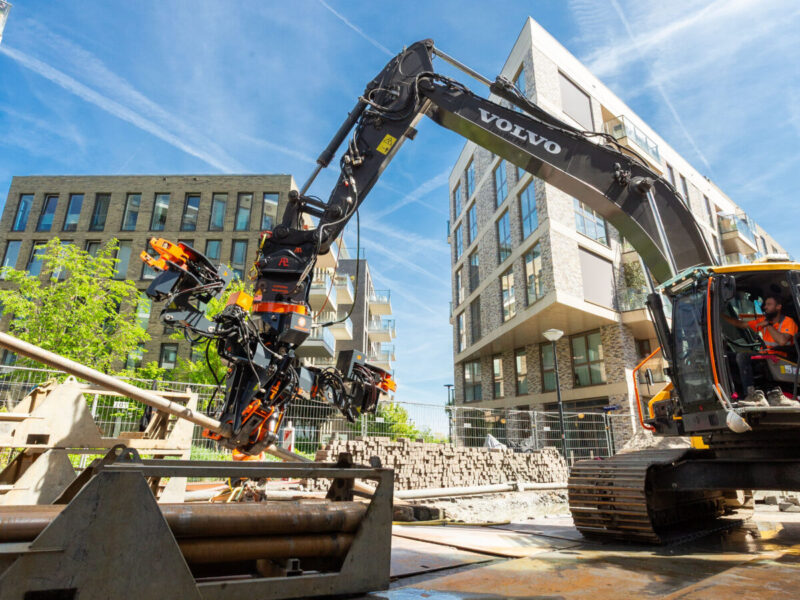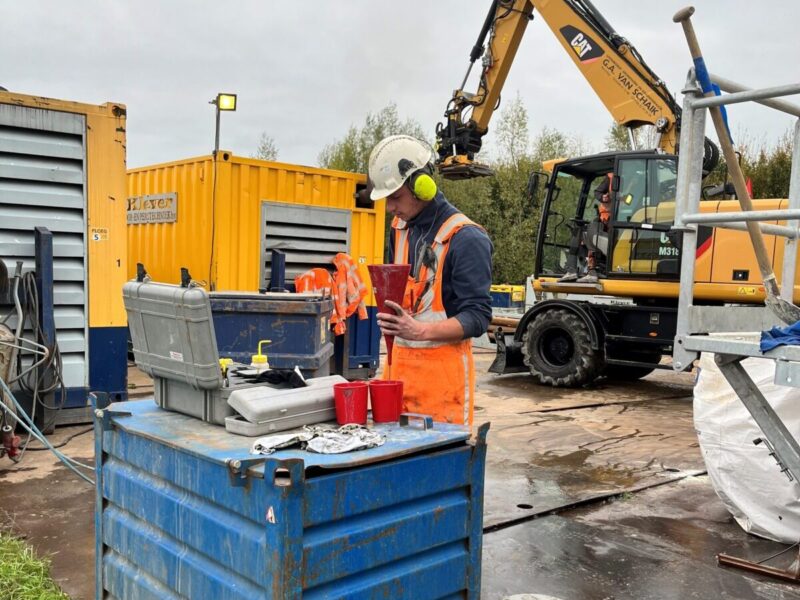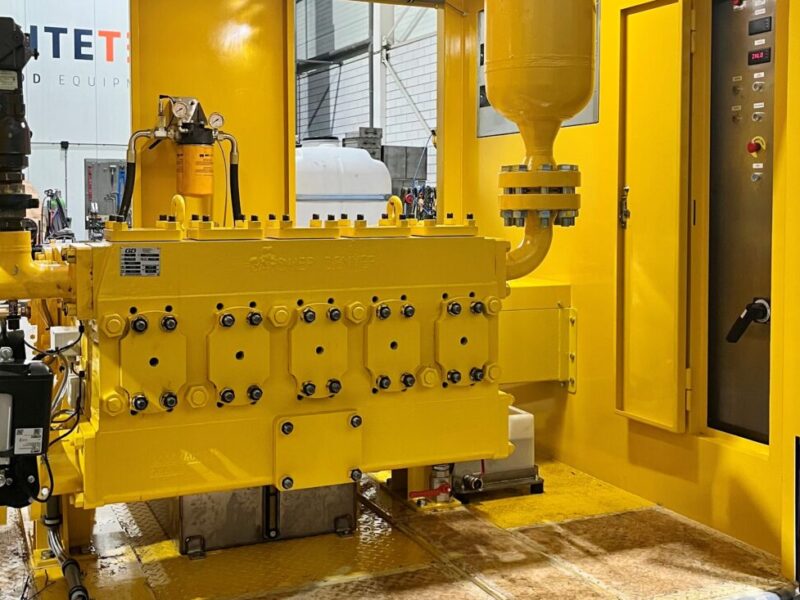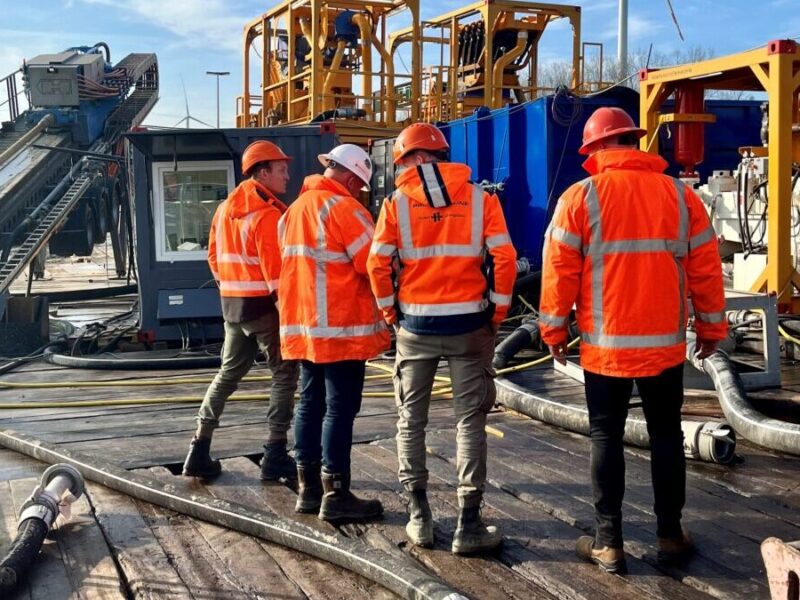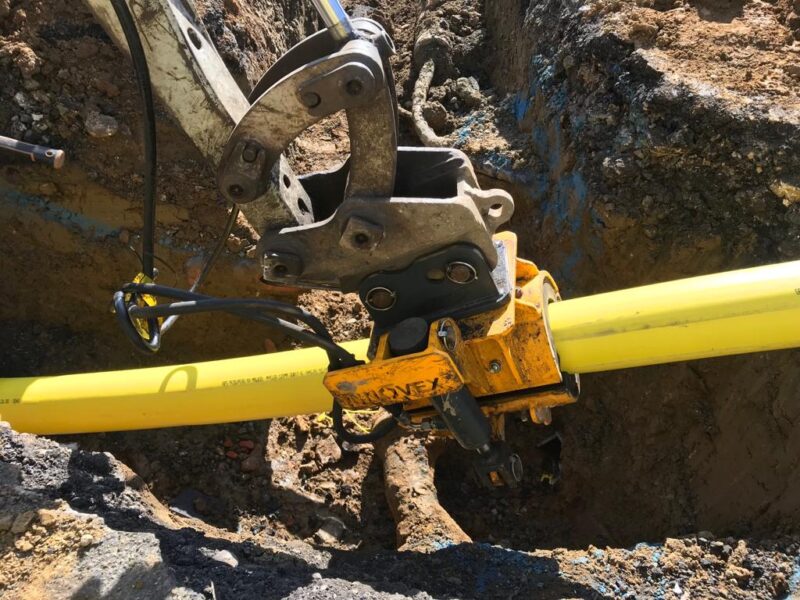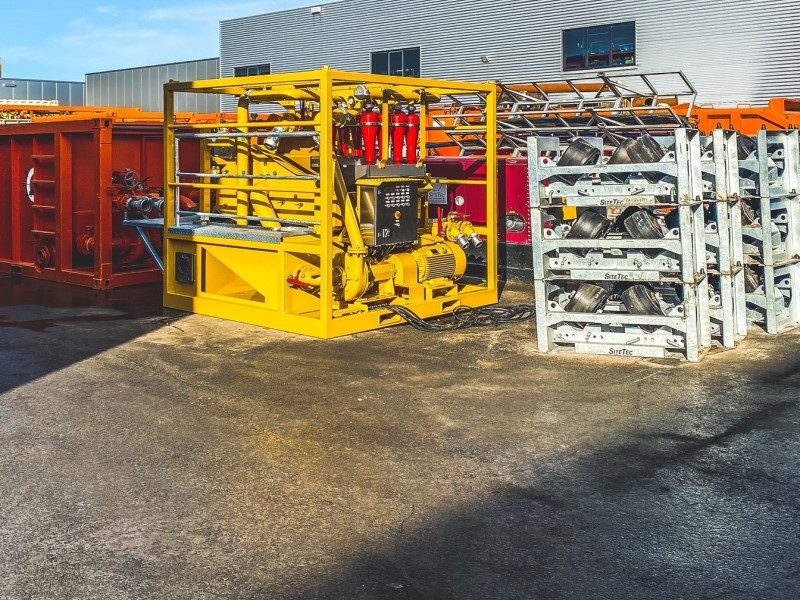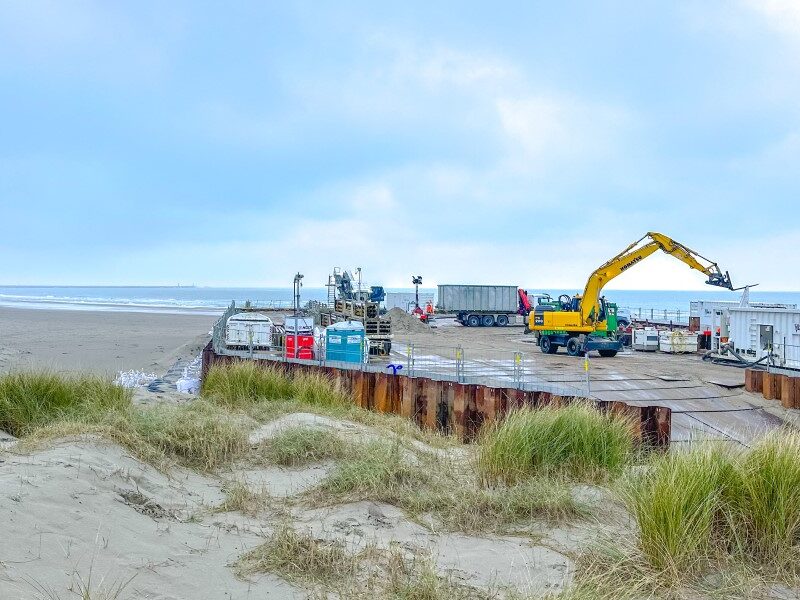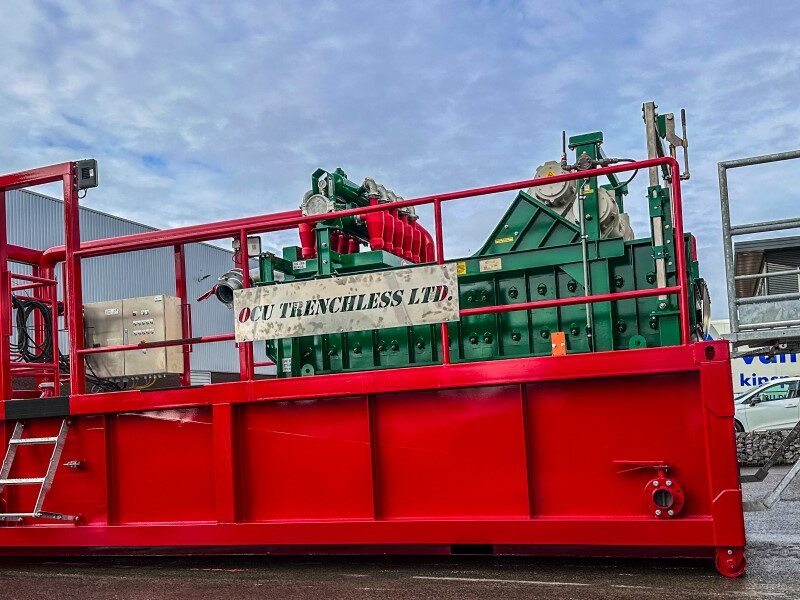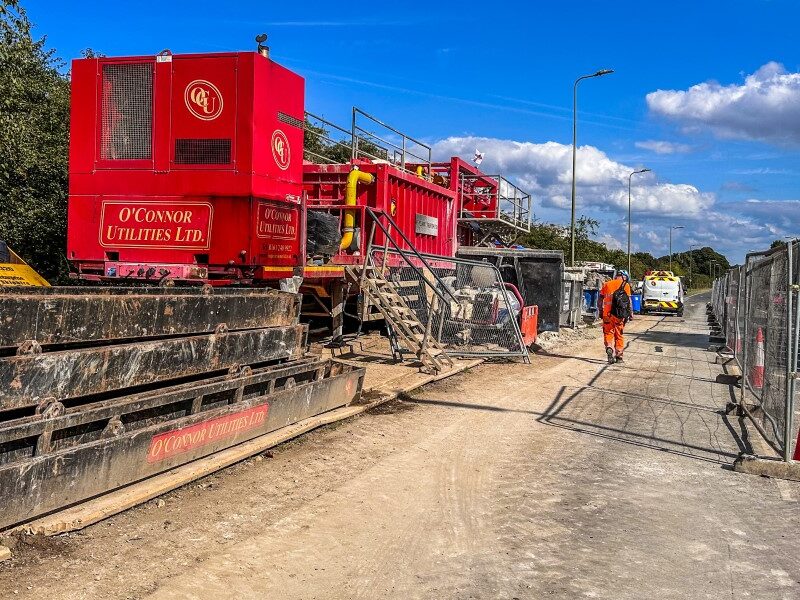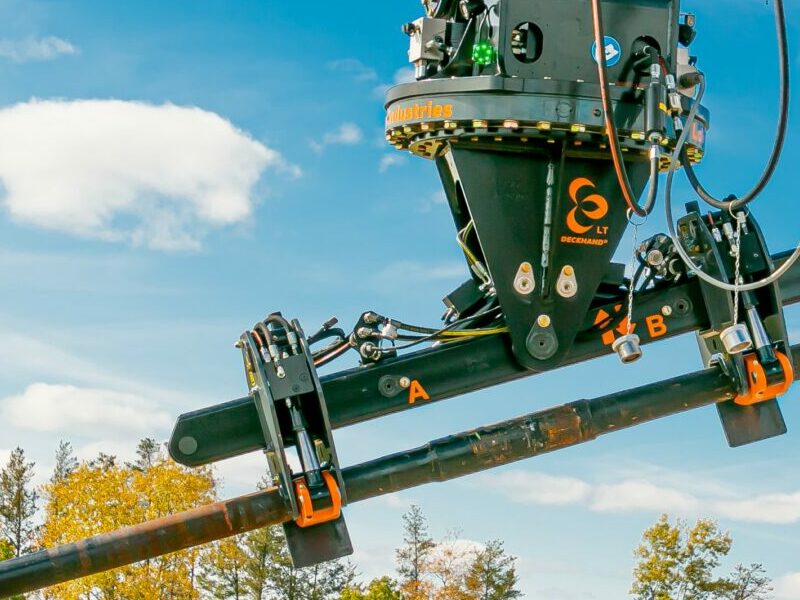A Dutch drilling company with it’s own style in equipment management – and a debut
An interview with Dominik den Butter
When you drive across the Klever Bridge onto the yard, you see it immediately: at Klever Boor- en Perstechniek, everything is neatly organised. The recognisable yellow-and-blue machines shine, the fleet of vehicles is lined up perfectly, and the corporate identity shows in every detail. That’s no coincidence. For the past ten years, Dominik has been keeping a close eye on the company’s equipment. “Sorting everything out, planning ahead, making sure the crews in the field can do their jobs well, that’s what gives me satisfaction,” he says.
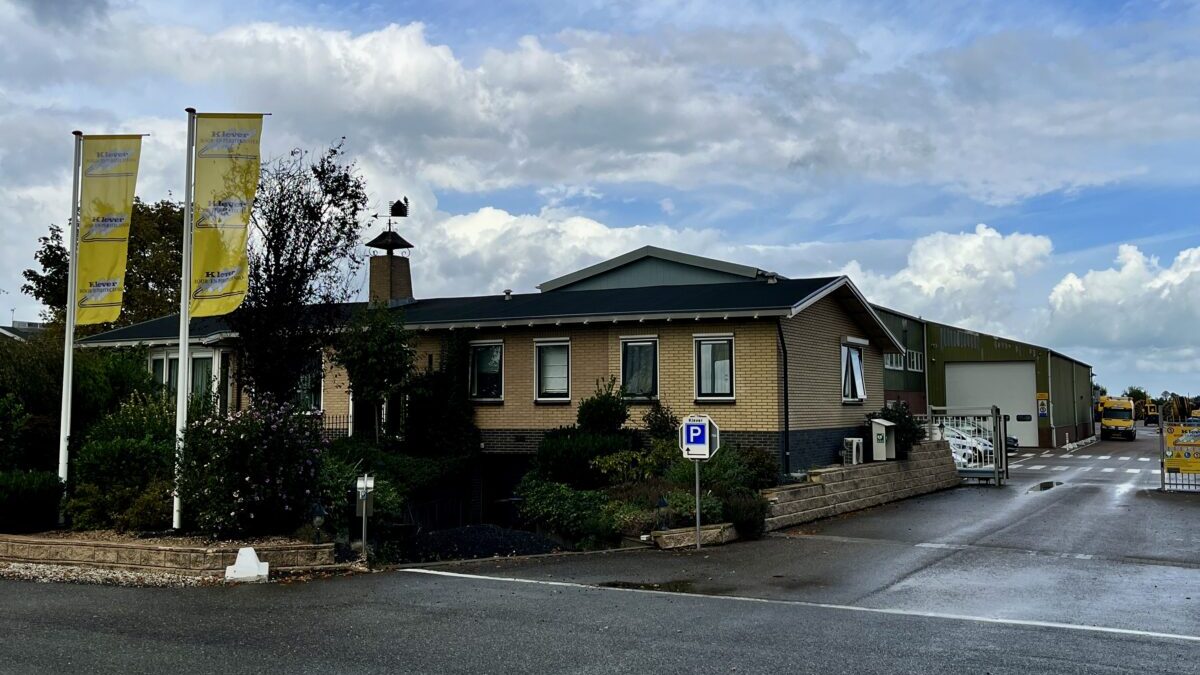
Knowledge from the field
Before diving into the world of horizontal directional drilling, Dominik worked for twenty years as a professional truck driver for another company. “I was driving a truck with a crane on all kinds of projects that I was also supervising. I had never even heard of HDD,” he laughs. “The fact that I ended up in trenchless drilling is actually thanks to my wife. She had been working at Klever for many years. When a vacancy came up in the field service, I jumped at the chance.”
“That entrepreneurial spirit is really ingrained in the company, and I was able to grow with it.”
The freedom he was given almost immediately was the deciding factor. “Klever was getting busier and busier, with bigger rigs and more challenging jobs. That entrepreneurial spirit is really ingrained in the company, and I was able to grow with it. Martin, the owner at the time, said: it doesn’t matter how you do it, just get it done. At first, I worked alongside the team on the job site. Soon, I was also involved in purchasing and managing equipment and the vehicle fleet. I focused fully on equipment. So yes, more of an office job. But I still have a lot of good contact with the team, which I think is essential. Together, we have built something really beautiful.”
The fate of the reel carts
For the experienced purchaser, equipment is more than just practical tools. It also represents the company. “When you arrive on a job and everything looks sharp, you’re already one step ahead. That’s why we invest not only in units that function as full workshops, but also in the details: a van with leather seats, a better sound system. It’s a matter of pride and comfort. The crews take better care of their kit when they really feel it’s their machine. A good example is the reel carts. They travel all over the country, from one team to another. And guess what, of all the machines, they spend the most time in the garage,” Dominik shares.
“When you arrive on a job and everything looks sharp, you’re already one step ahead.”
Since 2020, Klever has been part of the Van Gelder Group. Within the group, the Lopik-based company now specialises in large-scale HDD projects. With the merger, Dominik’s focus shifted to bigger rigs and more equipment across the full setup. “Our fully electric 235-ton rig attracted a lot of attention. That’s definitely the purchase I’m proudest of. For weeks there were a lot of ‘paparazzi’ hanging around our team on the job site to check out this newbie. We now have two 235-ton rigs and just added a new 80-ton machine.”
Climbing the safety ladder
Another decisive factor when considering new equipment is safety. This is a matter of course for every drilling company. The standard safety conditions apply to everyone. But at Klever, the ambition is even higher. “Safety is important to every contractor, but we go one step further. Klever is on Level 5 of the Safety Culture Ladder (SCL). This means that safety is fully integrated into all business processes and that every employee acts in an extremely safe manner, without even thinking about it,” Dominik explains. “In the beginning, the guys outside sometimes felt it was a struggle, with all these new rules. But they need to see it’s in everyone’s interest. It helps us win better projects, and ultimately, increasing safety actually makes work more enjoyable. With the right equipment, I can help with that.’
Quite an expensive tool
That’s why contact with the crews, and especially the foremen, is essential for Dominik. “One question we kept asking ourselves: okay, we’re on Level 5 of the SCL, but how does that fit with passing drill rods using a sling?”
“One question we kept asking ourselves: okay, we’re on Level 5 of the SCL, but how does that fit with passing drill rods using a sling?”
It was foreman Bart who suggested testing the Tonghand from LaValley Industries. “It’s quite an expensive tool, not something you just buy. In England it’s already a standard part of an HDD setup. Safety requirements there are much stricter. But no Dutch contractor was using it yet. So first, you want proof from practical experience. Well, Bart gave us exactly that. First, we rented a Tonghand from SiteTec. And what did we find? Not only is it far safer than using a lifting sling, we were also able to ream forward much faster and had much less transport of bentonite and drill pipes.”
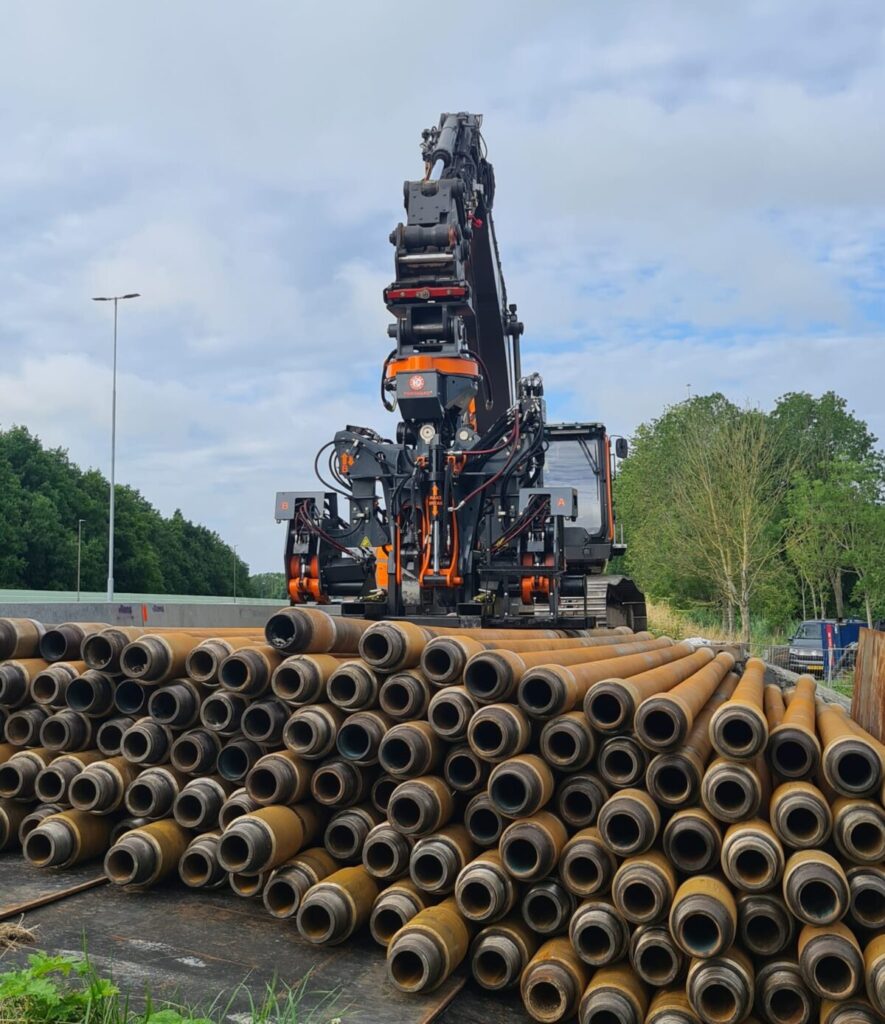
The only way forward
However, Dominik admits that there were also doubts. “Look, safety is worth the cost, especially for us. But it remains a significant investment, and you have to convince everyone in the organisation. Of course we also looked at alternatives. But as far as I know there really aren’t any. You have standalone breakout units, but those only break rods. That’s not the same principle. The Tonghand is truly unique. So in the end, we said: this fits a company that wants to lead in safety. And from renting, we moved to buying one.”
“Of course we also looked at alternatives. But as far as I know there really aren’t any.”
Looking back, the decision of buying a Tonghand was clear for Dominik. “You could say: we’ve always worked with slings, why change? But with Level 5 and client requirements, that doesn’t cut it anymore. The Tonghand is not a luxury, it’s the future. And honestly, it gives you a sense of pride, working with equipment like this.”
Future in equipment
“With one Tonghand we’re fine for now. We can use it on multiple rigs.” Still, Dominik does not rule out the possibility of more to follow. “For Gasunie, for example, it was already a requirement not to use slings for drill rods. If TenneT also says next year: you have to… then you might need another one. I see the Netherlands slowly moving in the same direction as England, where these types of tools are standard.”
“I see the Netherlands slowly moving in the same direction as England, where these types of tools are standard.”
Besides safe working, Dominik sees more challenges ahead. “Drilling fluid will remain a big issue. We recycle it, but the volumes are huge. It would be great if there were a more powerful or sustainable alternative, so that you need less. And gyros? They are still wired at the moment. Wireless would be a huge step forward. Especially for precision drilling under canals or gas pipes. In the Netherlands, it’s like spaghetti underground, so it wouldn’t be an unnecessary luxury.”
Staying up to date
How does Klever’s HDD expert ensure that he stays up to date with developments? “By consulting with the foremen, of course. They are out in the field and see what works. Bart is almost an inventor; he always wants to improve everything. And Marco on the 235-tonne machine also has a wealth of knowledge. We bounce ideas off each other, and that’s how you get ahead.”
He also seeks inspiration outside his own organisation. “I go to trade fairs, or at least I want to do that more, and talk to colleagues from other companies. You learn a lot from that. Last year, we were invited by SiteTec in England, together with colleagues from other Dutch drilling companies. That was really inspiring. I saw that the safety requirements are even stricter there and that they all work with LaValley Industries tools. Keeping each other on our toes is important.”
Inspirational trip
Dominik appreciates it when suppliers and dealers contribute ideas. “Whether you buy your rigs here or there, the principle is the same. They recycle, mix, drill. But what really helps me is when a supplier thinks in solutions. We bought new pumps from SiteTec, and there was an issue. Corné and his team immediately thought along with us. That solution-oriented approach is becoming increasingly important. And more challenging in a tight labour market where it is difficult to find specialists with the right knowledge.”
“So Corné,” Dominik concludes with a grin, “when are you taking us on another inspirational trip?”






